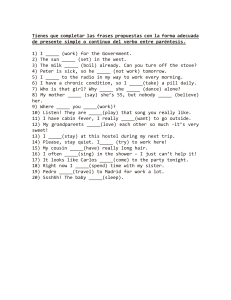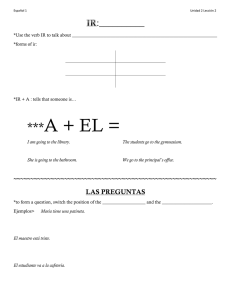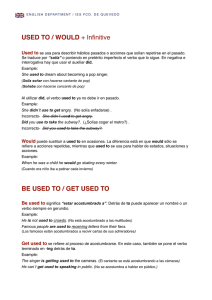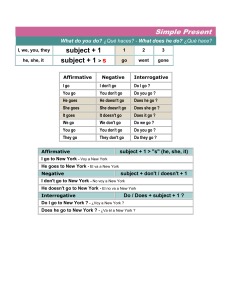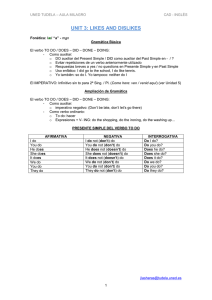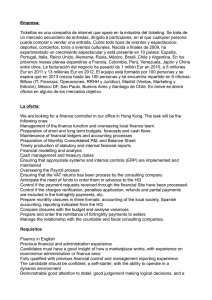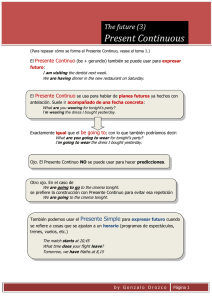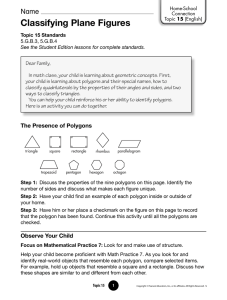Present Continuous (Presente continuo)
Anuncio
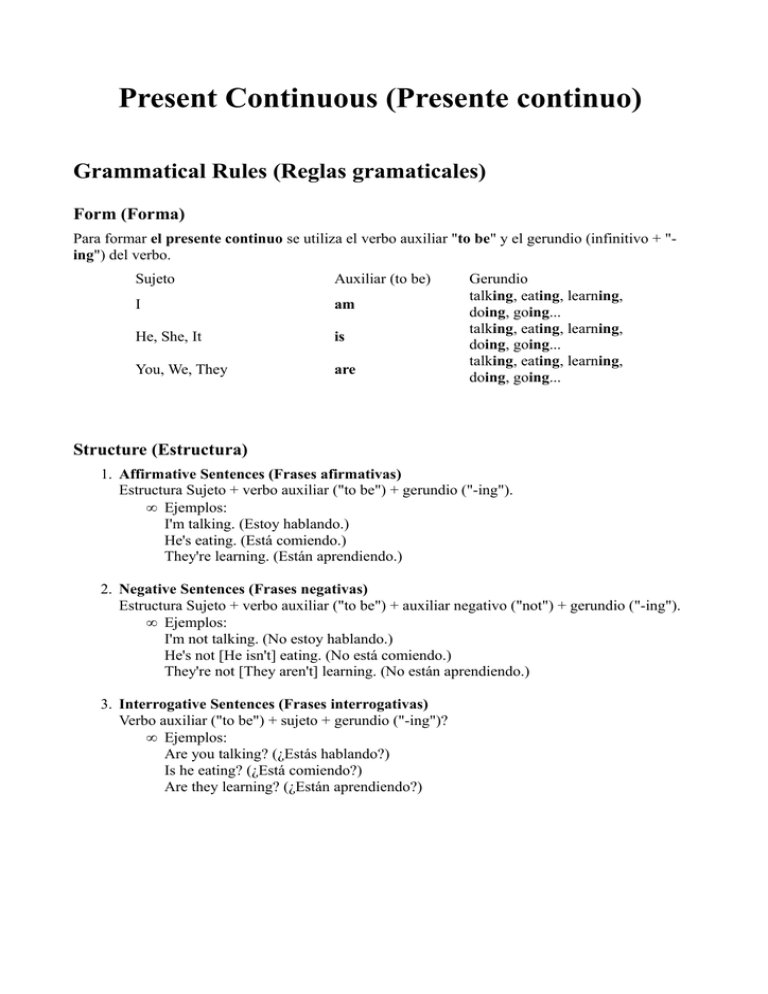
Present Continuous (Presente continuo) Grammatical Rules (Reglas gramaticales) Form (Forma) Para formar el presente continuo se utiliza el verbo auxiliar "to be" y el gerundio (infinitivo + "ing") del verbo. Sujeto Auxiliar (to be) I am He, She, It is You, We, They are Gerundio talking, eating, learning, doing, going... talking, eating, learning, doing, going... talking, eating, learning, doing, going... Structure (Estructura) 1. Affirmative Sentences (Frases afirmativas) Estructura Sujeto + verbo auxiliar ("to be") + gerundio ("-ing"). • Ejemplos: I'm talking. (Estoy hablando.) He's eating. (Está comiendo.) They're learning. (Están aprendiendo.) 2. Negative Sentences (Frases negativas) Estructura Sujeto + verbo auxiliar ("to be") + auxiliar negativo ("not") + gerundio ("-ing"). • Ejemplos: I'm not talking. (No estoy hablando.) He's not [He isn't] eating. (No está comiendo.) They're not [They aren't] learning. (No están aprendiendo.) 3. Interrogative Sentences (Frases interrogativas) Verbo auxiliar ("to be") + sujeto + gerundio ("-ing")? • Ejemplos: Are you talking? (¿Estás hablando?) Is he eating? (¿Está comiendo?) Are they learning? (¿Están aprendiendo?) Uses (Usos) 1. El presente continuo se utiliza para hablar sobre algo que está pasando en el momento en el que hablamos. Expresiones de tiempo tales como "now", "right now" and "at the moment" indican el presente continuo. • Ejemplos: I'm studying now. (Estoy estudiando ahora.) He's eating at the moment. (Está comiendo en este momento.) Is it raining? (¿Está lloviendo?) 2. También lo usamos para hablar de algo que está sucediendo en la actualidad pero no necesariamente cuando hablamos. En este caso, se utilizan expresiones de tiempo como "currently", "lately" o "these days". • Ejemplos: They're learning English. (Están aprendiendo inglés.) She's currently looking for a job. (Actualmente está buscando un trabajo.) Are you working much lately? (¿Estás trabajando mucho últimamente?) 3. Usamos el presente continuo para hablar de algo que está ya decidido que se hará en el futuro próximo. Su uso indica que es bastante seguro que lo planificado sucederá. • Ejemplos: I'm going to the party tonight. (Voy a la fiesta esta noche.) He's not [He isn't] coming to class tomorrow. (No viene a la clase manaña.) Are you working next week? (¿Trabajas la semana que viene?) http://www.curso-ingles.com/gramatica-inglesa/pcontin.php

